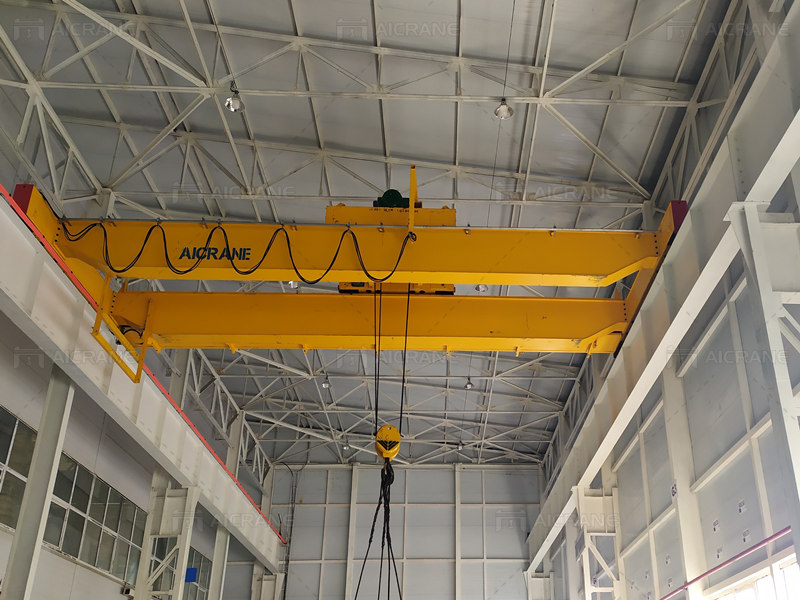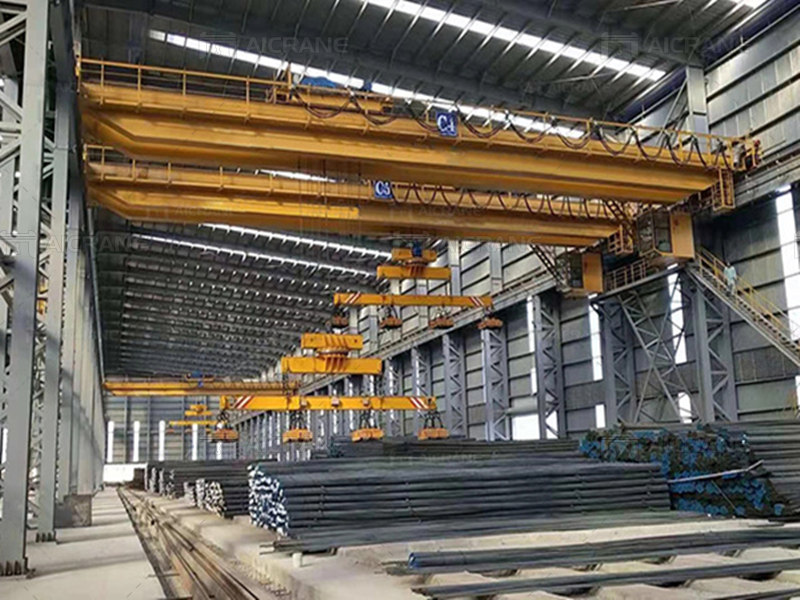In the realm of industrial operations, efficiency is paramount for maintaining competitiveness and meeting the demands of modern production environments. Among the various tools and equipment utilized in industrial settings, overhead cranes play a pivotal role in optimizing operations and enhancing efficiency. This article delves into the significance of overhead cranes in industrial efficiency, exploring their capabilities, applications, and contributions to streamlining operations across diverse industries.
Introduction to Overhead Cranes
Overhead cranes, also known as bridge cranes or overhead traveling cranes, are versatile lifting devices that are suspended from a runway system spanning the length of a facility. These cranes are equipped with a hoist, which moves along the length of the runway, enabling them to lift and transport heavy loads with precision and ease. Overhead cranes come in various configurations, including single-girder, double-girder, and gantry cranes, each tailored to specific lifting requirements and operational needs.
Streamlining Material Handling Processes
One of the primary roles of overhead cranes in industrial efficiency is streamlining material handling processes. These cranes are adept at lifting and moving heavy loads across large distances within a facility, eliminating the need for manual labor or multiple handling stages. By automating material handling tasks, overhead cranes reduce cycle times, minimize handling errors, and optimize workflow efficiency, allowing companies to meet production targets with greater speed and precision.

Maximizing Space Utilization
Overhead cranes play a crucial role in maximizing space utilization within industrial facilities. Unlike floor-based material handling equipment, such as forklifts or pallet jacks, overhead cranes operate above ground level, freeing up valuable floor space for other activities or storage purposes. This vertical integration of material handling reduces congestion on the factory floor, improves accessibility to work areas, and enhances overall layout efficiency, enabling companies to make the most of their available space.
Enhancing Safety and Ergonomics
Safety is a top priority in industrial environments, and overhead cranes are designed with numerous safety features to protect personnel and assets. These cranes are equipped with overload protection systems, anti-collision devices, and emergency stop controls to prevent accidents and mitigate risks during lifting operations(Мостовой кран 20 тонн). Additionally, overhead cranes promote ergonomic working conditions by reducing the physical strain on operators associated with manual material handling, leading to improved worker safety and well-being.
Supporting Just-In-Time Manufacturing
In today’s fast-paced manufacturing landscape, just-in-time (JIT) production methodologies have become increasingly prevalent, requiring seamless coordination and timely delivery of components and materials. Overhead cranes play a vital role in supporting JIT manufacturing by providing efficient and reliable material handling capabilities. These cranes enable quick and precise movement of materials from storage areas to production lines, ensuring that components are delivered exactly when and where they are needed, minimizing inventory holding costs and improving production efficiency.
Flexibility and Adaptability
Another key advantage of overhead cranes is their flexibility and adaptability to various lifting tasks and operational environments. Whether lifting heavy machinery(мостовой кран цена) in a manufacturing plant, loading cargo in a logistics warehouse, or assembling components in a construction site, overhead cranes can be configured and customized to meet specific application requirements. This versatility enables companies to optimize their material handling processes and adapt to changing production demands, enhancing overall operational flexibility and responsiveness.

Integration with Automation and Technology
The integration of overhead cranes with automation and technology further enhances their role in industrial efficiency. Advanced control systems, such as programmable logic controllers (PLCs) and remote monitoring software, enable seamless coordination of crane movements and real-time tracking of operations. Additionally, the adoption of sensor technologies, such as RFID tags and proximity sensors, enhances safety and efficiency by providing accurate positioning data and detecting potential hazards in the crane’s path. By leveraging automation and technology, overhead cranes(Мостовой кран 100 тонн) can operate more efficiently, minimize downtime, and optimize resource utilization, ultimately contributing to higher levels of industrial productivity and competitiveness.
Energy Efficiency and Sustainability
Efforts to improve energy efficiency and sustainability have also influenced the design and operation of overhead cranes. Manufacturers are developing energy-efficient drive systems, regenerative braking technology, and eco-friendly lubricants to reduce energy consumption and minimize environmental impact. Additionally, the use of alternative power sources, such as solar or wind power, further enhances the sustainability of overhead crane operations. By prioritizing energy efficiency and sustainability, companies can not only reduce operating costs but also demonstrate their commitment to environmental stewardship, aligning with global sustainability goals and regulations. Visit website:https://www.aicrane.ru/
Conclusion
In conclusion, overhead cranes play a vital role in optimizing operations and enhancing efficiency in industrial environments. From streamlining material handling processes and maximizing space utilization to enhancing safety, supporting JIT manufacturing, and providing flexibility and adaptability, overhead cranes contribute to improving productivity, reducing costs, and maintaining competitiveness in today’s dynamic business landscape. As industries continue to evolve and demand for efficient material handling solutions grows, overhead cranes will remain indispensable tools for optimizing operations and driving industrial efficiency.